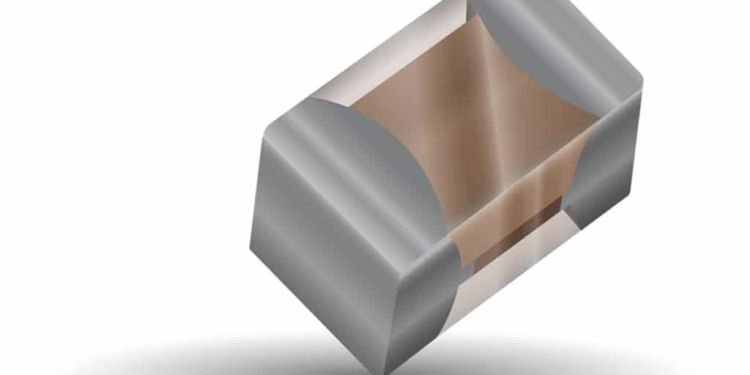source: AVX news
The new, ultraminiature (EIA 0402, 1005 metric) UBR Series ultra-broadband resistors feature a rugged construction, tight tolerances, & a 125mW power rating, & deliver excellent DC to 20GHz performance in a wide range of optoelectronic, automotive, telecom, broadband, & satellite communications applications.
FOUNTAIN INN, S.C. (April 5, 2018) – AVX Corporation, a leading manufacturer and supplier of advanced electronic components and interconnect, sensor, control, and antenna solutions, has released the new UBR Series ultra-broadband resistors. The ruggedly constructed, ultraminiature (EIA 0402, 1005 metric) ultra-broadband resistors are made with high-performance tantalum nitride (TaN) materials and utilize the company’s proprietary, automotive-qualified, glass-sandwich FLEXITERM® surface-mount technology, which provides an extra measure of protection against flexure damage during installation, as well as 100% laser trimming, which achieves tight tolerances. The new UBR Series ultra-broadband resistors also offer a 125mW power rating and a wider frequency range than competitors, extending from DC to 20GHz.
Ideal applications for the series extend across the optoelectronic, automotive, telecom, broadband, and satellite communications markets and include: optoelectronic transceiver modules, transmission and receiver optical subassemblies (TOSA and ROSA), wideband test equipment, low-noise amplifiers, MMIC amplifiers, mixers, broadband receivers, EW jammers, directional couplers, and ultra-broadband splitters and combiners.
“Our new UBR Series resistors deliver excellent ultra-broadband performance and tight tolerances over a wide frequency range in ultraminiature case sizes that are ideally suited for use in a wide range of cross-market, small-form-factor electronics,” said Larry Eisenberger, principal technical marketing engineer at AVX.
The series’ ultraminiature 0402 case sizes measure 1mm x 0.5mm x 0.5mm (L x W x H) ±0.10mm and have a terminal width of 0.25mm ±0.15mm.
The new UBR Series ultra-broadband resistors are currently offered with four standard temperature coefficient of resistance (TCR) values: ±25, ±50, ±100, and ±250ppm/ºC, with additional values available upon request; four standard resistance values: 25Ω, 50Ω, 100Ω, 200Ω, with the full range of 25Ω to 400Ω available upon request; three standard tolerances: ±0.5%, ±1%, ±2%, with additional values available upon request; and two termination options: FLEXITERM (Ag/epoxy) plated with NiSn or gold-plated nickel (Ni/Au). Rated operating temperatures for the series extend from -40°C to +125°C.
UBR Series ultra-broadband resistors are RoHS compliant and are tape-and-reel packaged in quantities of 5,000 pieces. Lead-time for the series is currently 12 weeks.
































